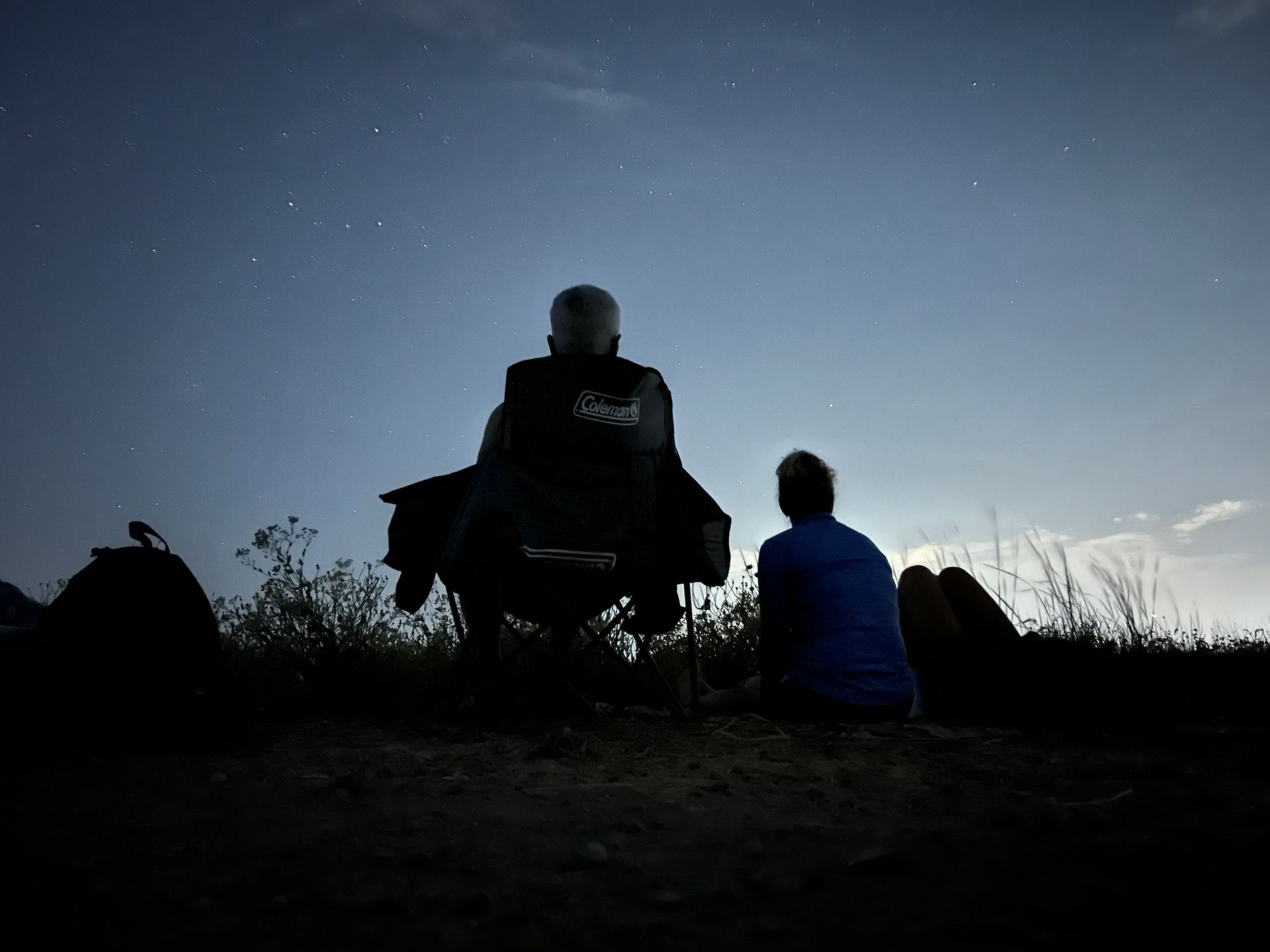Enjoying Outside - Parade of Planets

Although planets aligning does occasionally occur, it’s not something we see all that often. And this time it’s a doozie! Between mid-January through late February Mars, Saturn, Jupiter and Venus will queue up and appear as a line of brilliantly shining planets. Venus, Jupiter and Saturn will all look like bright, white points of light from our venue here on Earth, and Mars, the red planet, showing up as a glowing orange dot. A telescope would be optimal for some in depth planet peeking but even a pair of binoculars will intensify the phenomenon. But, you'll be able to see them in all their glory using just your naked eyes as well! Neptune and Uranus will also be loitering “nearby”, but you won’t be able to see them without high powered binoculars (and even then they will be very dim) or a telescope.
How does it happen? All the planets in our solar system continually orbit the sun at their own rates and occasionally they catch up to each other. Because the planets’ orbits are an elliptical path, every so often they appear to line up as we see them from Earth. Unfortunately for stargazers, the alignments don't last very long though because each planet is moving at a different speed. They first aligned mid-January but will be visible through mid to late February with the best viewing materializing in early February. To find them pick a spot with a clear view of the southern horizon shortly after sunset. Venus, Saturn and Neptune (only visible with a telescope) will be congregated together low in the southwestern sky and Mars, Jupiter and Uranus (also not visible without a telescope) will appear higher in the southern sky. Venus, Saturn and Neptune will quickly slip below the horizon though so you’ll only have a couple of hours to enjoy them. To help you find them remember that stars appear to twinkle while planets shine brightly. Another helpful trick is to first try to find Mars’ red-orange glow and then look in the vicinity to pick out the other planets. You’ll need to be away from urban light pollution and cloud cover to be able to see them though. They should be visible from almost anywhere in the Northern Hemisphere if the sky is clear. Unfortunately, our region has had several cloudy nights but thankfully, the planetary parade will be visible until late February.
The parade of planets event also brings up the awareness of preserving dark skies. Urban sprawl and related expanding light pollution not only threatens dark, nighttime skies and hampers stargazing activities but it also deteriorates natural biological rhythms and disturbs fragile ecosystems. Artificial light sources can disorient migrating waterfowl and nocturnal species which rely on natural light patterns to navigate and flourish. The moon is even lending a hand and will be in a new moon (shadowed) phase which will help by lessening the amount of illumination in the sky making it easier to view the planets.
Bonus material - Mercury is on the roster in late February - but it is tiny and so close to the sun that you won’t be able to see it without using specialized equipment.
If you’re planning on heading out of town to view the planets, consider visiting Molok Luyuk or the rest of the Berryessa Snow Mountain National Monument - you’re sure to find dark skies there. Just be sure to check the weather forecast before you head out. And don’t forget the hot cocoa!
-Kristie Ehrhardt (kehrhardt@tuleyome.org)
Tuleyome Land Conservation Program Manager
RECENT ARTICLES






